- Home
- Antonia Fraser
Gunpowder Plots Page 12
Gunpowder Plots Read online
Page 12
As ever, the local forces of law and order were outnumbered and outgunned. A handful of constables held a chain across the street; several Bonfire Boys fell over it, eight were arrested and the remainder scattered into the darkness. But the petitions to the magistrates had not been in vain: by noon of 5 November, eighty police had arrived on the train from London, and by dusk they had mounted a cordon in front of County Hall, where the crowd gathered for a stand-off. For a while they ‘amused themselves with using insulting expressions towards the police and special constables, an occasional rocket being exploded in the thickest part of the crowd’, but by eight o’clock ‘a disposition was manifested by the crowd to go to greater lengths.’ The Brighton mail coach arrived and attempted to make its way past the crowd, but a stray squib caused the horse to bolt. It ran into a shop front, to cheers from the crowd and another volley of squibs, and the magistrate and local landowner Lord Chichester hurriedly ascended the steps of County Hall and read the Riot Act. The police charged the crowd and, although several constables were seriously hurt in the mêlée, the crowd was eventually dispersed.
The London police were dispatched back to the capital the next morning; but although the Fifth was finished, the Bonfire Boys were not. That night, and every night for the rest of November, more than a hundred of them descended on the town to rampage. The streets blazed with tar barrels, the air cracked with fireworks, and those who had mobilized the campaign against bonfire were singled out mercilessly. The offices of the Sussex Advertiser were subjected to nightly assaults, ‘which appear to have been expressly selected’, as the editor grimly noted, ‘with a view to retaliation for the remarks we have felt it our duty to make’. By the end of November the magistrates were forced once more to swear in special constables, draft in more police reserves and dragoon the town back to order. Once again, the Bonfire Boys proved slippery, their ringleaders impossible for magistrates to identify. Only four arrests were made, and the suspects were all eventually discharged, their defence solicitor arguing that the disturbances had been ‘not what is ordinarily termed a riot, but… the keeping up of an old custom and might be regarded more as a frolic’.
The year 1847 had ended in a conspicuous triumph for the forces of bonfire, and one that would endure. Being drafted to keep law and order on the Fifth was no one’s favourite detail: special constables were regularly fined for deserting their posts or refusing to serve in the first place. Furthermore, attempting to suppress the celebrations invited random and anonymous acts of retaliation: as the Advertiser observed, ‘let any individual only be suspected by the mob as unfavourable to them, and forthwith he is a marked man – if he venture among them he is personally ill-used or insulted, or his house beset with tar barrels down to the front of it and burnt.’ It seemed that the compromise mooted by bonfire’s moderate supporters was the best solution, and in 1848 the crowd was led away from the High Street to the outlying Wallands Park estate, where they roared, sang, drank and exploded squibs and rockets to their hearts’ content. The problem, it seemed, was solved, and the exercise was repeated the following year without incident.
In 1850, however, the story took the decisive twist that would produce the ritual of the Fifth as it is constituted today. Following the Catholic emancipation of 1829, the Pope had that year restored the hierarchy of Roman bishops in England, headed by a new archbishop of Westminster. This move was characterized in Anglican heartlands as ‘the Papal Aggression’, and the response to it was voluble, persistent and extraordinarily bitter. ‘Protestant England’, declared the Sussex Agricultural Express, ‘is fairly aroused… we look with shame at the depth of degradation to which half-a-century of concessions to Rome has led us.’ The prospect of the nation being ‘parcelled out into Romanist dioceses’ mobilized anti-papist sentiment to a degree that had not been seen for a century, and established a climate where the traditional affirmations of Bonfire Night were no longer too extreme but too mild. ‘If all that we are doing’, the Express concluded, ‘is the burning of an effigy, or the shouts of a mob, Rome will regard it as no more than the flash of last year’s rockets… this monstrous project must be defeated.’
All across southern England, the Fifth was celebrated in 1850 with unprecedented intensity, encompassing towns where bonfire had previously been restrained or entirely absent. In Farnham, for example, it was recorded that ‘our usually quiet town was yesterday the scene of a most determined and universal, though pacific, “No Popery” demonstration.’ In Brighton, there was a huge turnout, but the ‘evening passed off better than usual’; the consensus was that attempts at suppression had made the disorder worse, and most concluded that ‘forbearance on the part of the authorities is the better policy.’ In Lewes, the Bonfire Boys seized their moment and returned to the town centre with a vengeance. The streets resounded with the blasts of the fat home-made squibs known as ‘Lewes rousers’, and for the first time the tar-barrel procession was set ablaze at midnight at the spot where the Lewes Martyrs had been burned at the stake by Marian papists. The current alarm was compounded with ancient history, and the celebration was taken to imply a permanent permission to return to ‘old customs’, an assertion of traditional liberties now regarded as dating back three centuries.
The following year, it was as if it had never been otherwise. ‘The streets of Lewes’, recorded the Express, ‘presented the usual aspect: squibs and crackers were fired in all directions.’ The Bonfire Boys roamed freely, and their ‘blackened faces and ingenious disguises appeared to afford the highest amusement to the inhabitants’. For the first time, a separate celebration was noted on the far side of the river, where ‘at Cliffe Corner a capital effigy of the Pope was consumed on a grand bonfire.’ In the centre of the town proper, a theatrical flourish was added to the bonfire ritual: ‘a figure dressed as a Romish priest’, which was hailed with loud cheers by the assembled crowd as ‘the Cardinal’, accompanied by another figure in ecclesiastical drag acclaimed as ‘the Pope’, were strung up over the bonfire in front of the White Hart Inn and ‘pelted mercilessly by squibs of all sorts and sizes, which came thicker and faster’ from a crowd chanting the verses of ‘Remember, remember the Fifth of November’ or, as the Express drolly put it, ‘loudly avowing their ignorance of any pretext for forgetting the existence of Gunpowder Treason’. Although the Pope-burning was an innovation, a topical response to the issue of the day, even on its debut it seemed deeply rooted in tradition, and it would rapidly become hard to believe that it had not always been an integral element of the night.
Many more elements of today’s ritual were woven into the celebrations in the next two years. On the Fifth of 1852 ‘the town was speedily alive with squibs, crackers, rockets etc.’, and at ten o’clock ‘the great event of the night took place – the procession of the Pope and Cardinal Wiseman [the archbishop of Westminster] to their appointed doom.’ This time they were accompanied by the first local Enemy of Bonfire: the editor of the Sussex Advertiser, whose name was Bacon, noted that ‘an ingenious representation of the editor of this journal in the shape of a pig’ was also consigned to the flames. Once more, at Cliffe Corner, ‘a capital Pope was brought to the stake.’ But at the time that these traditions were forming, they were still viewed as responses to a current emergency.
We have no doubt [observed the Express] that, by a conciliatory course, the time may come when the magic words ‘Remember, Remember, the Fifth of November/Gunpowder Treason and Plot’ may lose their spell, and the celebration may die out. But whilst Protestants are still languishing in Tuscan dungeons for reading the Bible to their maid-servants, surely the time has not yet come for abandoning one iota of our hostility to Rome.
What was not yet foreseen was that the truculent insistence on the right to bonfire itself would prove to be a far more enduring force than the immediate crisis that had restored it.
The following year more flourishes were added; the description of the 1853 celebrations, and even the panorama of them painted by Thomas Henwoo
d, could almost stand for the event today. The threat of suppression seemed permanently on hold, and the Bonfire Boys were in full regalia, ‘worn rather to give effect to the scene than a disguise’. The Enemy of Bonfire was for the first time an international one: with the Crimean War looming, the centrepiece proclaimed ‘Down with the Czar’, ‘preceded by a large Russian bear, modelled with a degree of artistic skill’ that made observers almost ‘indignant at its transfer to the flames’. With the ‘cheers, Rule Britannias, and the Guy Fawkes ditty, the banging of squibs, the sounds of the band, all mixed together, and forming an inextricable confusion of sound’, the Pope, himself ‘a finished work of pyrotechnical art’, detonated at the climax of the ceremony. Across the river, the display mounted by the Cliffe was ‘certainly equal, if not superior, to that exhibited in the town… amongst the banners figured the famous inscription, “No Popery” ’. For the first time on record, too, the Cliffe had drawn a crowd of spectators ‘from Brighton, and other places in the neighbourhood, who appeared to enjoy the event amazingly’.
This was the year from which the earliest bonfire societies – the Cliffe, and the Lewes town society now known as the Borough – officially date their formation. After 1853 their organizing committees, it seemed, no longer needed to hide in the shadows. Yet the bonfire wars were far from over, and within twenty years Lewes and a tight network of smaller bonfire societies in the surrounding Kent and Sussex borders, would be virtually the only ones left standing across southern England. The tendencies that had attempted to end the celebrations in Lewes in the 1840s were on the march across the nation: rural towns everywhere were becoming larger, better policed, falling more firmly under the control of a middle class for whom protection of property and security of public space were prevailing and increasingly dominant values. Bonfire riots spelled the end of the ceremonies across the Home Counties from Essex to Surrey. Guildford, for example, had long rivalled Lewes in the scale of its celebrations, but failed to maintain them against the new civic backlash. In 1863 the bonfire crowd’s frustration burst its banks, and they set on a local magistrate’s residence with hammers and axes, demolishing windows, doors and the entire front of his house; but this type of disorder was now more easily dealt with, and by 1870 ‘scarcely a squib’ was in evidence across the town.
There is no single or definitive answer as to why Lewes in particular stood firm against the tides of history. Part of it must be that, unlike towns such as Guildford that expanded in size and industry, Lewes remained a relatively small market centre, with much of the local population growth gravitating to nearby Brighton and Horsham. But a major factor seems to have been the local bonfire party’s highly effective mix of intransigence and strategic compromise. On the one hand was the opposition’s fear of reprisal from an event they had failed to suppress in the past, and to which the events of 1850 had given a greater public legitimacy; on the other were negotiated settlements between the civic authorities and the newly visible bonfire societies, who offered concessions such as planned procession routes and designated bonfire spots that contained the free-floating disorder.
This spirit of compromise may have built on a particular local tradition of negotiation that had been glimpsed previously in the agrarian ‘Captain Swing’ riots of 1830 that swept from Kent across the south coast to Sussex, then up through the Home Counties to Huntingdonshire and beyond. The Swing riots were brutally suppressed – nineteen public executions, and more than 500 collaborators transported to Tasmania – but in Lewes, despite a large constituency of labourers ‘very active in promoting discontent and tumult’, they were resolved peacefully in a mass public meeting: the largest local landowner, Lord Gage, met with a deputation of tenant farmers on Ringmer Green, and agreed to their demands to reduce rents so that they could pay higher wages to their labourers. The rioters of Lewes had abundantly demonstrated their ability to play hard cop, but they had experience of playing soft cop too.
By the late nineteenth century, once the Fifth in Lewes had weathered the anti-bonfire storm, it was increasingly hailed as a cherished institution and a quirky display of civic pride. Although it maintained its trademark denunciations of popery, the new causes it adopted were in tune with the prevailing imperialist mood, celebrating Britain’s colonial adventures in India, Egypt, Afghanistan and South Africa and pillorying Liberal leaders for their opposition to them. In 1875 the Daily Telegraph reported with admiration on the ‘people wonderfully dressed’ beneath ‘the great No Popery banner, attended by the Society’s brass band’, and the climax where once ‘the bishops had read a mock service and delivered up a fiery exhortation, the three gigantic effigies were brought up, amid howls and execrations.’ Tussles over the legitimacy and ownership of bonfire continued – Temperance activists campaigned against it, Orange lodges attempted unsuccessfully to appropriate it – but by the early twentieth century it was widely felt that the celebration ‘was shorn of all real religious significance long ago… it is a survival and a revival of those old-time demonstrations against Romanism, which were the excuse for a licence for men to lose their reason for a few short hours in the year.’
This opinion was offered by the journalist Arthur Beckett, whose fond pursuit of the ‘old-time flavour’ of the Sussex Downs generated pieces for the Spectator, the Idler and the Field that were published in book form in 1909 as a series of ‘impressions and reminiscences’ of the area. Beckett’s reportage of the Fifth in Edwardian times combines benign nostalgia with a sharp sense of the continuing dangers of the event. ‘The hooligan element is in strong force,’ he warned; ‘it is better to carry a stout stick than to go unprotected.’ He further recommended that ‘it is well to wear old clothes and to cover the eyes with wire goggles against stray sparks… it is a wonder no-one is crushed to death, as the object of the Lewes Bonfire Boys is to spread confusion, and confusion reigns supreme in the old streets of Lewes for some eight or ten hours.’ Nevertheless, ‘to the man unacquainted with Lewes, the spectacle of a sleepy town run mad on one evening of the year is a matter for marvel.’
The fireworks are over, and visitors are being crammed like sardines onto the special late trains back to Brighton and London; but the final, most private and most potent act of Lewes’s ritual is still to come. Back in the centre of town, ankle-deep in firecracker debris drifting like autumn leaves, the bonfire societies are regrouping, bangers and crow-scarers once more rallying their straggling marches back to their respective strongholds. Here, torches are piled on the sites of the original nineteenth-century bonfire spots, forming burning mounds around which the Bonfire Boys reassemble and the bands reform. At Cliffe Corner, Vikings mingle with cavaliers and bishops, hip flasks and scrumpy kegs are drained and impromptu tea-stands steam the greasy night air. The Cliffe sort themselves into the best approximation of the early evening’s procession they can muster, and the company sets off for a last march around the town, bangers emptied from pockets into tar barrels and rubbish bins, explosion after explosion setting off shop fire alarms in their wake as, drunk on fire and noise, they claim the streets once more in celebration of their traditional rights.
In every corner of town, the same acts are being performed: figures in cloaks and masks scurrying or staggering through side streets to bonfires where their societies are congregating. The brave, the drunk and the foolhardy leap over the fires to the cheers of their comrades, usually avoiding anything worse than minor burns, though serious accidents at this point are not unknown. Each year at Lewes brings its crop of battle-scars – rocket-burns, eye injuries, hair set alight by falling firework debris – yet, perhaps remarkably, there has been no direct fatality of the Fifth since 1909. There is much experience and fire-sense behind the apparent recklessness, and everyone knows the emergency drill if you fall into the flames: hold your breath and roll out.
Up and down the bombed-out streets, muttered chants, rousing choruses and barrages of firecrackers echo through palls of smoke. At Cliffe Corner, watched by crushes of revellers
hanging from the open windows of the flats above, hundreds jostle around the bonfire for the concluding Bonfire Prayers. The moment is jealously guarded and, when necessary, fiercely defended. In the early 1990s Vikings often tangled with officious riot police; around the same time, the insensitivity of a magic-mushroom- and alcohol-addled traveller contingent led to several ill-tempered stand-offs and eruptions of violence. The Cliffe have shared the rest of the night with the police and the crowds, but its final moments are theirs alone. ‘Please to remember the Fifth of November’ starts up, everyone from children in pageboy ruffs to old-timers in tattered military braid barking their way through verses long forgotten elsewhere:
Burn him in a tub of tar
Burn him like a blazing star
Burn his body from his head
Then we’ll say old Pope is dead
Hip-hip hurrah!
The brass band segues into ‘Rule Britannia’, ‘God Save the Queen’, ‘Land of Hope and Glory’ and ‘Auld Lang Syne’; a hand-held setpiece is sparked up, spelling out ‘Good Old Cliffe’ in fizzing Catherine wheels; Bonfire Boys and Girls pair up and sidle away; the final bangers and crackers are dumped on the fire in a shower of sparks, and the Cliffe’s ceremonial fire engine, a quaintly restored Victorian gurney, pumps an ironic, token splash of water onto the flames. The Fifth is over for another year; the preparations for the next will start almost immediately. The work of bonfire is never done, and the struggle to maintain it against rising tides of regulation, policing and local complaints demands constant vigilance. But it is a struggle to which the bonfire party of Lewes has been committed for generations, and one which has in its time subsumed many other struggles and causes. The language of Gunpowder Treason may have been written over repeatedly, but it has not been obscured; rather, it has become a palimpsest in which the history of Lewes is etched in ever finer detail.

 Warrior Queens
Warrior Queens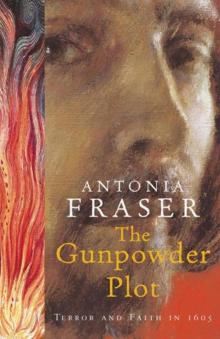 The Gunpowder Plot
The Gunpowder Plot Cromwell
Cromwell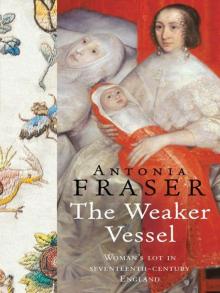 The Weaker Vessel: Women's Lot in Seventeenth-Century England
The Weaker Vessel: Women's Lot in Seventeenth-Century England Marie Antoinette: The Journey
Marie Antoinette: The Journey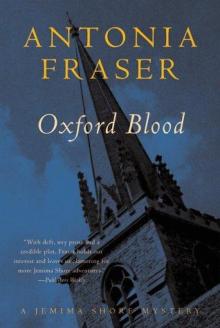 Oxford Blood
Oxford Blood Your Royal Hostage
Your Royal Hostage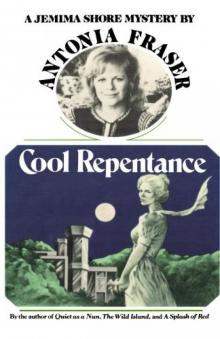 Cool Repentance
Cool Repentance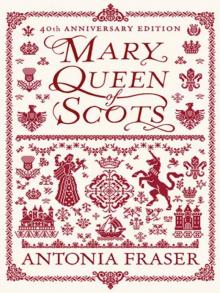 Mary Queen of Scots
Mary Queen of Scots Political Death
Political Death Royal Charles: Charles II and the Restoration
Royal Charles: Charles II and the Restoration My History: A Memoir of Growing Up
My History: A Memoir of Growing Up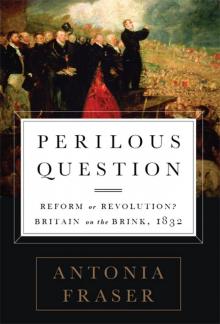 Perilous Question: Reform or Revolution? Britain on the Brink, 1832
Perilous Question: Reform or Revolution? Britain on the Brink, 1832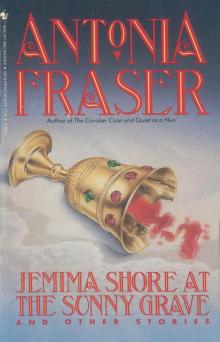 Jemima Shore at the Sunny Grave
Jemima Shore at the Sunny Grave A Splash of Red
A Splash of Red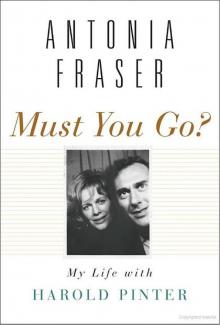 Must You Go?: My Life With Harold Pinter
Must You Go?: My Life With Harold Pinter Love and Louis XIV: The Women in the Life of the Sun King
Love and Louis XIV: The Women in the Life of the Sun King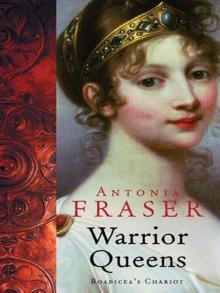 The Warrior Queens
The Warrior Queens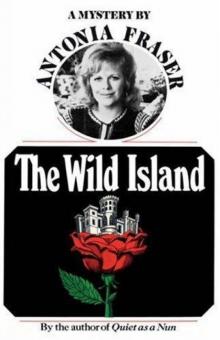 The Wild Island
The Wild Island Quiet as a Nun
Quiet as a Nun Perilous Question
Perilous Question Cromwell, the Lord Protector
Cromwell, the Lord Protector Gunpowder Plots
Gunpowder Plots The Wild Island - Jemima Shore 02
The Wild Island - Jemima Shore 02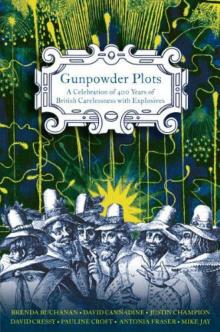 Gunpowder Plots: A Celebration of 400 Years of Bonfire Night
Gunpowder Plots: A Celebration of 400 Years of Bonfire Night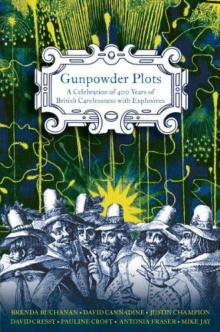 Gunpowder Plots_A Celebration of 400 Years of Bonfire Night
Gunpowder Plots_A Celebration of 400 Years of Bonfire Night Marie Antoinette
Marie Antoinette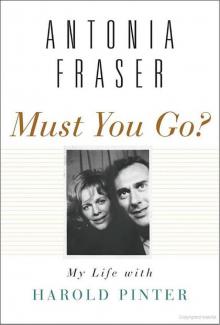 Must You Go?
Must You Go? My History
My History